Last week John Eads of Left Coast Bonsai was in the garden to help get my young trees into shape ahead of repotting season. As John studied with Michael Hagedorn, he’s a great resource for developing the dwarf Japanese flowering quince known as chojubai.
Here are a few of the trees he worked on this week along with some tips for pruning.

Orange chojubai before pruning
John was happy to see so much new growth on the clump-style chojubai above. The goal for pruning it was to keep just a bud or two of the previous year’s growth to develop branching with short internodes. His tip: prune to a bud that is growing in the direction in which you want the branch to grow.
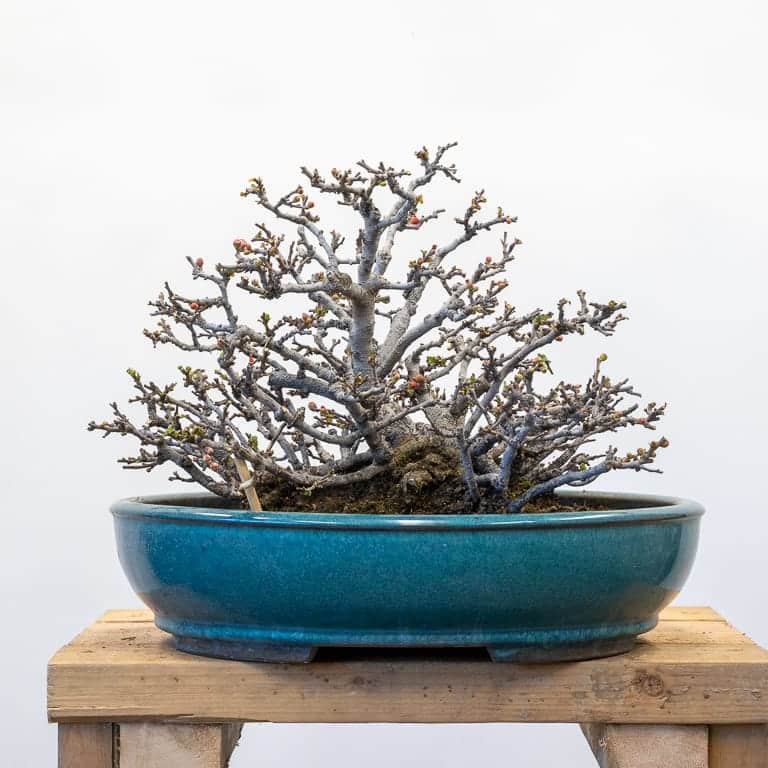
After cutback (thanks, Max, for helping John with the pruning!)
The next tree John worked on was a white chojubai. The goal for this tree is the same as the goal for the tree above – cut back to just a few buds to keep the internodes short.

White chojubai before pruning
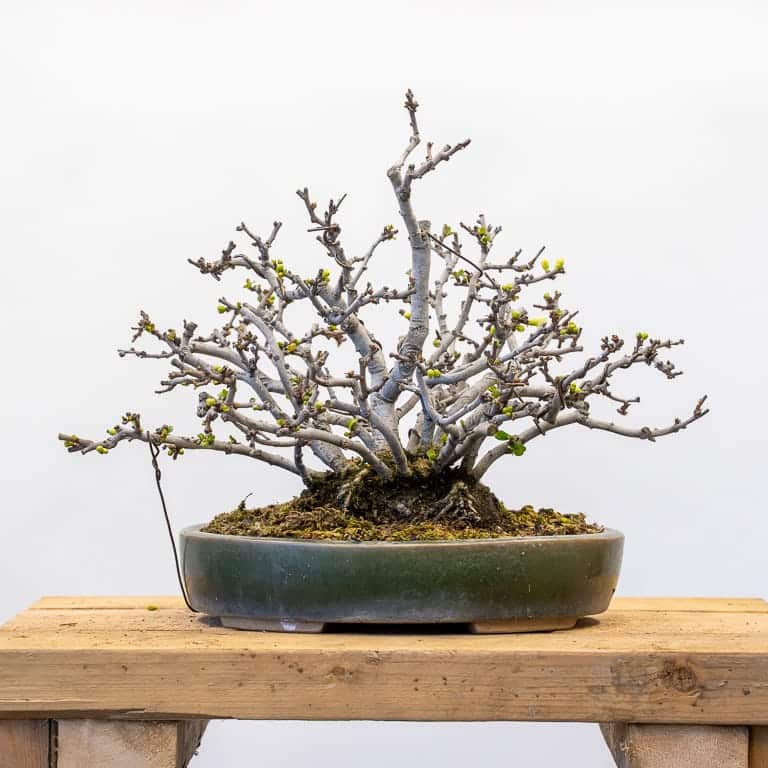
After cutback
John’s tip: don’t prune too close to the bud you want to keep. One way to do this is to cut through the bud above the one you want to keep.
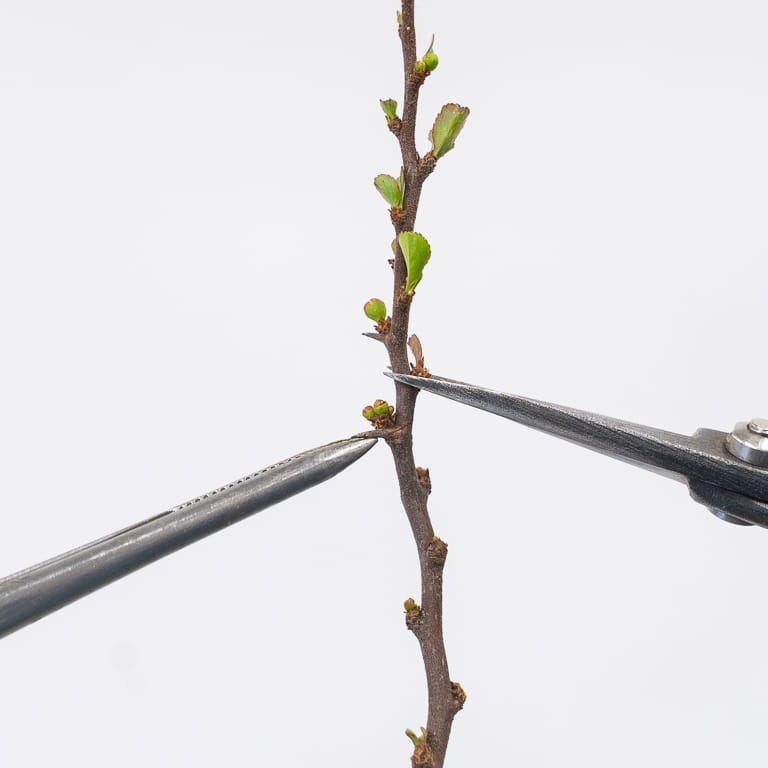
To preserve the bud on the left, cut through the bud above it on the right
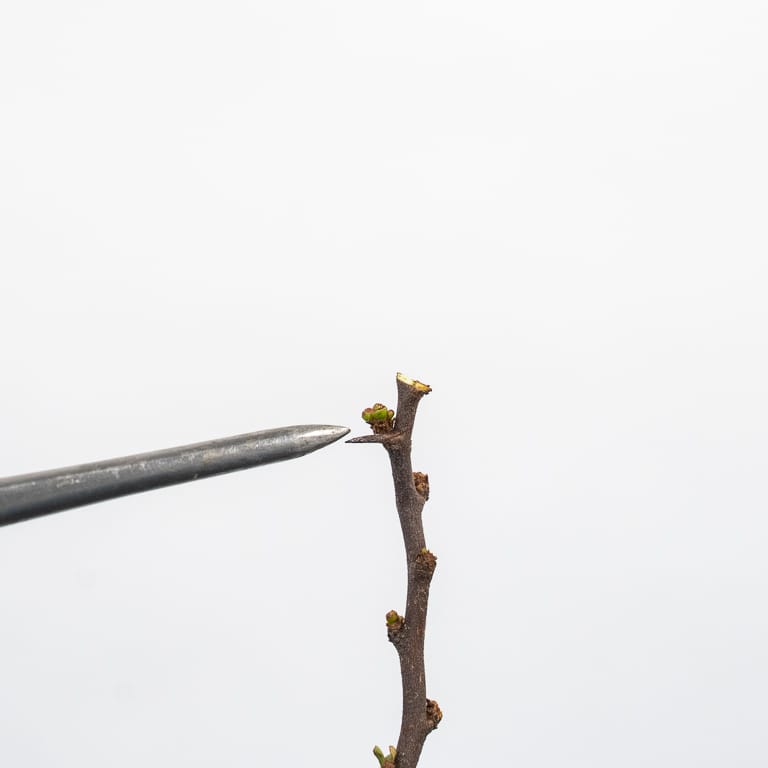
After pruning a safe distance above the bud
Pruning too close to a bud risks damaging it. Leaving a stub reduces the likelihood of the bud drying out and the stub protects it from being broken if the tree is bumped.
The remainder of the chojubai we worked on were young trees. John’s tip: identify a target size for each tree and adjust your work based on the target.
Here’s an example.
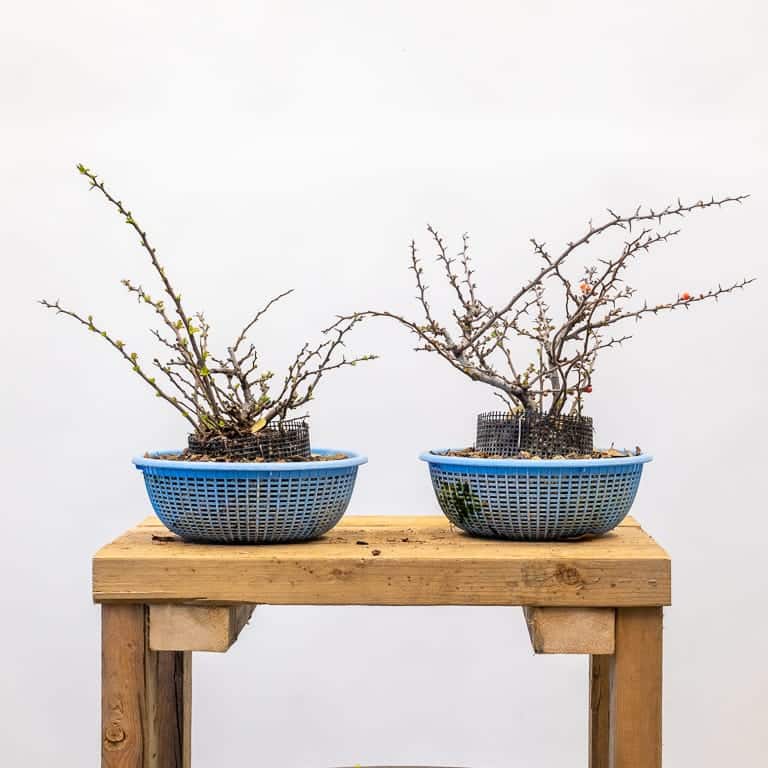
Young chojubai (about 6-8 years from cutting)
John noted that the tree on the left has a small trunk and branches and would make a good shohin. The tree on the right has coarse trunks and would make a better bonsai if it grew larger.
If the goal is to make a small tree, we can prune back to just a few new buds. To make a larger bonsai, we’ll let the tree grow for 2-3 years before pruning to let the branches thicken.
Here’s what this work looks like.
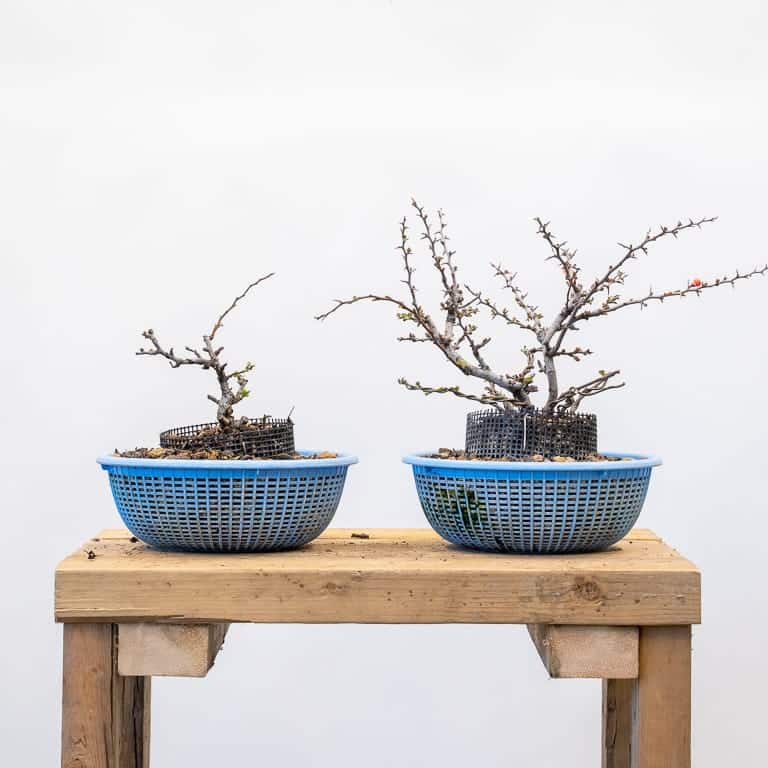
After pruning – future shohin on the left; future kifu or chuhin (medium-size) tree on the right
Learn more about what John’s working on at the Left Coast Bonsai website or Instagram page.
Subscribe to Bonsai Tonight
New Posts Delivered Every Tuesday and Friday
Farid says
Hello,
Thank you very much for all informations that you give regulary.
I have a chojubai who never have flowered . It’s a tree aged of 7/10 years .
Is that normal ?
I advance, many thanks for your answer.
Best regards.
Farod
Jonas Dupuich says
Hi, Farid! How did you start the chojubai? If you started with cuttings from a tree that was already flowering I’d expect your tree to produce flowers now. In terms of care, chojubai will flower better if they are kept outdoors where they can get some sunlight. Fertilizer can help too (any all-purpose fertilizer will work).
I hope this helps!
Farid says
Hello Dear Jonas,
Thank you for your answer.
I bought my chojubai 2 years ago (asiatic production I think), till now I never make any cuts…
He have a sunny place and receive fertilizer regulary of course it is permanently outside …
I keep praying at church for flowers … I can send a pic too.
Farid
Jonas Dupuich says
If the tree is healthy then you’re on the right track. I’ll cross my fingers that the tree will bloom soon!
Pete Shirk says
Jonas: Great session on pruning chojubai. Particularly useful for me was your clear photography and explanation of avoiding too close a cut to a new bud. To keep my pruning tidy-looking I have often pruned too close, thus compromising or killing what I wanted as a terminal bud.
Thanks for your great posts, I look forward to them each week. -pds
Jonas Dupuich says
Thanks, Pete – good luck with the trees this year!
Bob says
What is the purpose of the mesh circle around the clumps in the blue colanders?
Jonas Dupuich says
Hi, Bob – good question. I don’t know that it’s necessary – it’s something I saw another grower do so I thought I’d give it a try (https://bonsaitonight.com/2020/02/28/onumas-mini-sized-bonsai/).
The idea is that the future container will be small so I can restrain the width of the root-base to help fit the tree in a small pot when the training is done but still provide more space for roots down below. It’s also a handy approach when making exposed root trees – a common approach for chojubai (as you’ll see in the link above).
Michael B. says
The mesh is good for developing nebari, the surface roots will develop out and down, sloping toward the original pots soil line terminating at the edge of the mesh. It’ll give you a more natural looking root structure, rather than a trunk that just sticks out of the soil with all roots parallel to the soil line. In shallow pots it’s also helpful in maintaining the health of the tree during the growing season by allowing added soil volume for roots to grow and prevent drying out. The additional soil can easily be removed for showing or surface root management without disturbing the rest of the roots.. You’ll see the mesh or thin plastic run around the whole outer edge of the pot that particular purpose.
Wabi47 says
i love these little guys as well. I had the same questions about the use of mesh/colanders. It reminded me of a Hagedorn blog about getting rid of the suckers in order to retain health of the main trunk(s) and i wonder if this could help. Have you noticed less suckering?
Jonas Dupuich says
Good question – I don’t know that the colanders have had an effect on suckers, but I haven’t looked for the connection either. What I do know is that removing them is helpful if you’re looking to develop the trunk!
David Campbell says
Thanks Jonas,
Very helpful and straightforward. Went right out and pruned my chojubai.
Graham Hutchinson says
Hi Jonas
I am trying to buy some items from your shop
3 of the Creanmate cleaners and 1 of your little book of bonsai but I live in Australia and finding it hard to order through your online shopping site.
Do you ship to Australia ? if so how do I arrange an order and pay in Australian dollars
Regards Graham
jean-yves Guilard says
il sont bien beaux ses chojubai ,j’ai 4 jeunes plantes de 3 ans depuis 2 ans et qui on fleurie rouge